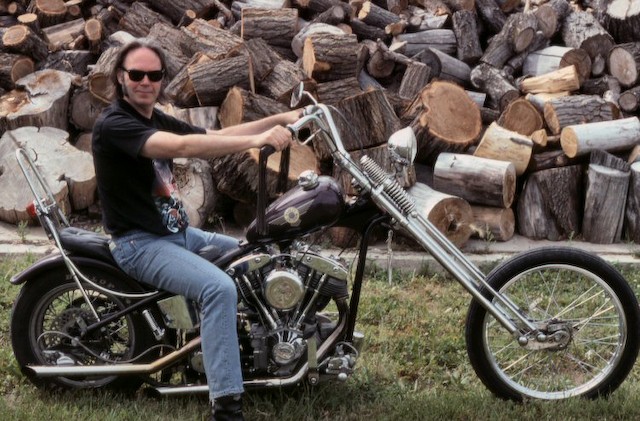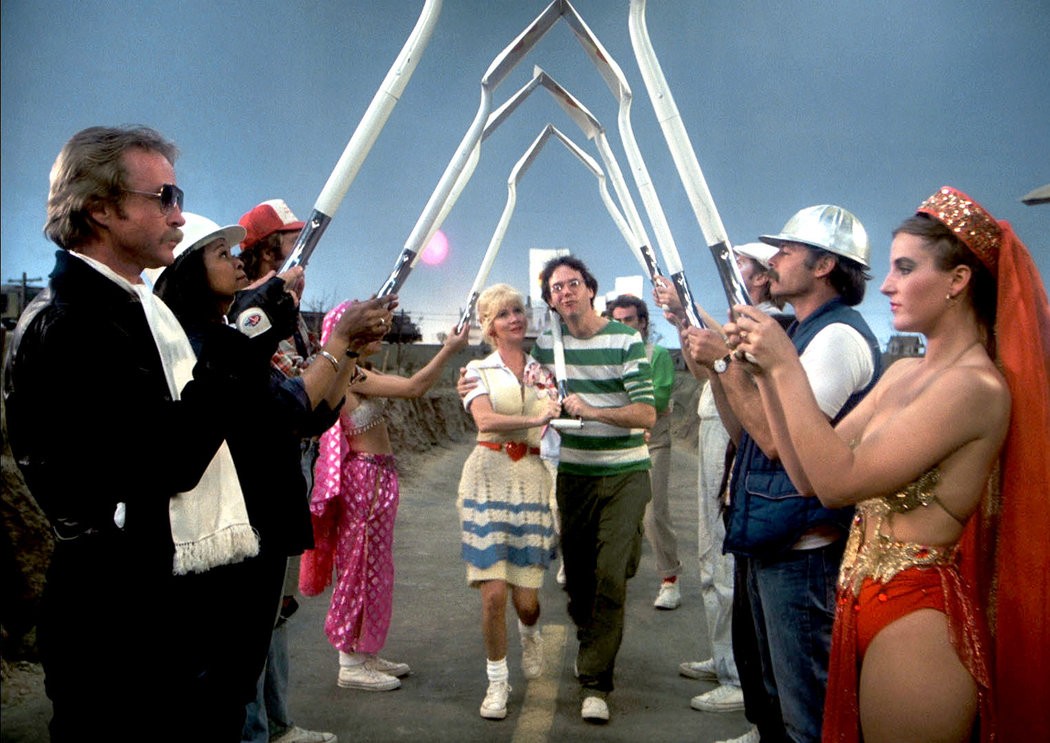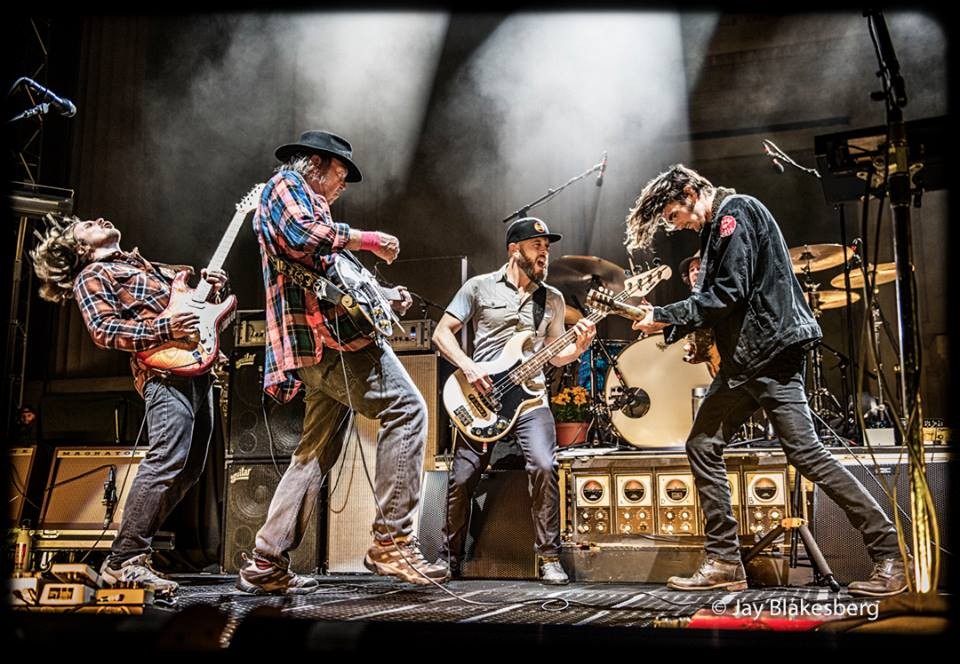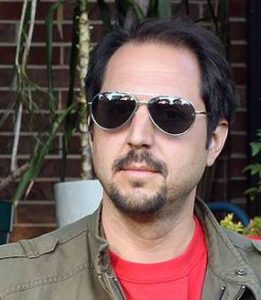 Last year, Promise of the Real joined Neil Young to produce The Monsanto Years. Following the tour in support of this album, Young and Promise of the Real released a sort-of live album called Earth (June 2016). It is only “sort-of” live because the source recordings have been heavily produced — most notably by being mixed with the sounds of nature, especially animals. The purpose for this cross-pollination was to establish a link between humanity and nature; thus, the artistic statement reinforced some of the themes prominently showcased in The Monsanto Years (generally: don’t be messin’ with nature because if you do, you’re destroying the world). While Mr. Young and Promise of the Real are still touring together, and will be performing a couple of dates at Pomona’s Fox Theater this week (as well as another stop at Indio’s Desert Trip all-star music festival this upcoming weekend), the Weekly thought it would be prudent to recap some of the various high-concept artistic choices of the musician’s past projects.
Last year, Promise of the Real joined Neil Young to produce The Monsanto Years. Following the tour in support of this album, Young and Promise of the Real released a sort-of live album called Earth (June 2016). It is only “sort-of” live because the source recordings have been heavily produced — most notably by being mixed with the sounds of nature, especially animals. The purpose for this cross-pollination was to establish a link between humanity and nature; thus, the artistic statement reinforced some of the themes prominently showcased in The Monsanto Years (generally: don’t be messin’ with nature because if you do, you’re destroying the world). While Mr. Young and Promise of the Real are still touring together, and will be performing a couple of dates at Pomona’s Fox Theater this week (as well as another stop at Indio’s Desert Trip all-star music festival this upcoming weekend), the Weekly thought it would be prudent to recap some of the various high-concept artistic choices of the musician’s past projects.
In the mid to late ‘70s, Young made quite an impact with his Rust Never Sleeps tour. The tour, which included both solo / acoustic songs and electric songs performed with Crazy Horse, was as diverse in it its presentation as it was in its music. The stage was decorated with oversized props (including a giant harmonica, microphone, and amplifiers), which were all staged by a bunch of roadies dressed as Star Wars Jawas. During at least one stop of the tour, filmmaker Cameron Crowe, who was then a 21-year-old reporter for Rolling Stone, was told by Young to suit up and be one of the Jawas, or “road-eyes,” as they were called. While the road-eyes did their thing, “A Day in the Life,” by The Beatles was played over the PA system.
However, just before the final piano chord of the song was struck, the concert began with Young walking, wide-eyed and overwhelmed, onto the stage, where he performed “Sugar Mountain,” “I Am a Child,” and a few other acoustic numbers. Also, throughout the show, during set-breaks or longer periods of adjustment, audio clips were played from the PA announcements at Woodstock. At the end of the show, after Crazy Horse had joined him, and they had jammed through songs like “Cortez the Killer,” and “Like a Hurricane,” the band cleared off, and the final chord from “A Day in the Life” was allowed to run its course. The overall experience is essentially a successful attempt, by Young, to shatter any singular image that audiences had distilled the artist into. By coincidence, the blu-ray of the Rust Never Sleeps concert film was released this past June.
 For the 1982 film Human Highway, Young teamed up with actor Dean Stockwell and co-directed a pretty far-out, stylistically kaleidoscopic mish-mash of improvised scenes, live performances, and behind-the-scenes road footage. The cast featured Young, Stockwell, Russ Tamblyn, Dennis Hopper, Charlotte Steward, Sally Kirkland, and Devo. The story revolves around a roadside diner / service station, which is under new ownership of someone who wants to torch the place for the insurance, beyond that, there lurks the spectre of nuclear contamination from a nearby power plant.
For the 1982 film Human Highway, Young teamed up with actor Dean Stockwell and co-directed a pretty far-out, stylistically kaleidoscopic mish-mash of improvised scenes, live performances, and behind-the-scenes road footage. The cast featured Young, Stockwell, Russ Tamblyn, Dennis Hopper, Charlotte Steward, Sally Kirkland, and Devo. The story revolves around a roadside diner / service station, which is under new ownership of someone who wants to torch the place for the insurance, beyond that, there lurks the spectre of nuclear contamination from a nearby power plant.
The narrative seems secondary to the charm of this film, however, since the overall impression is that the charm of the world seen in the film is derived from the antics of the simple folks who inhabit their small world. Beyond the plights of these characters, the narrative becomes muddled by the schemes of greedy characters and increasingly abstract depictions of nuclear threats. The director’s cut of Human Highway premiered during last year’s Shakey Fest (a celebration of Neil Young-related cinema, which featured several works produced by Young under his pseudonym Bernard Shakey), and it received a DVD release this past July.
 1982 also saw the release of Trans, an album which featured Young’s experimentation with synthpop and new wave music. The next year, Young released Everybody’s Rockin’. Recorded with his backing band The Shocking Pinks, this was Young’s foray into rockabilly. Over the next twenty years, Young would collaborate with a variety of artists (most prominently Crazy Horse) and contribute to the soundtracks of various films (including: Philadeliphia, for which his title song received an Oscar-nomination, and Dead Man, for which he allegedly improvised the entire score). Despite the variety in his recordings, it wasn’t until his 2003 tour for Greendale that his live theatrics once again took on a grand scale.
1982 also saw the release of Trans, an album which featured Young’s experimentation with synthpop and new wave music. The next year, Young released Everybody’s Rockin’. Recorded with his backing band The Shocking Pinks, this was Young’s foray into rockabilly. Over the next twenty years, Young would collaborate with a variety of artists (most prominently Crazy Horse) and contribute to the soundtracks of various films (including: Philadeliphia, for which his title song received an Oscar-nomination, and Dead Man, for which he allegedly improvised the entire score). Despite the variety in his recordings, it wasn’t until his 2003 tour for Greendale that his live theatrics once again took on a grand scale.
For Greendale, Young essentially constructed a rock opera about a fictitious family in a small, fictitious town. Actors pantomimed the action on an elaborate set as Young variously narrated and performed the opera with Crazy Horse. The story touches upon the themes of governmental corruption, environmentalism, and an over-preponderance of media presence in America. Young also produced a Greendale film, and several years later, an official Greendale comic book was released. Furthermore, there is still an active Greendale website, which offers a variety of information about the story and its characters.
There have been other experiments over the years — both musically and in terms of stage theatrics; however, this overview should certainly paint the picture of a musical storyteller who likes to stir things up for a reason. That reason has at times merely demonstrated Young’s passion as an artist, and at other times it has shown how his interest in maintaining a solid image as a world-class performer pales in comparison to his commitment to his beliefs.


